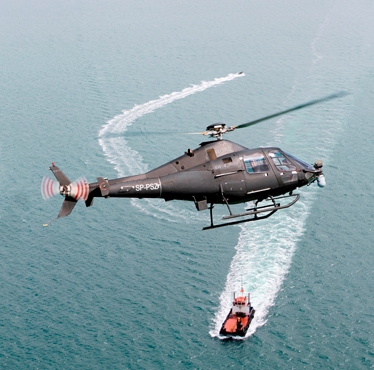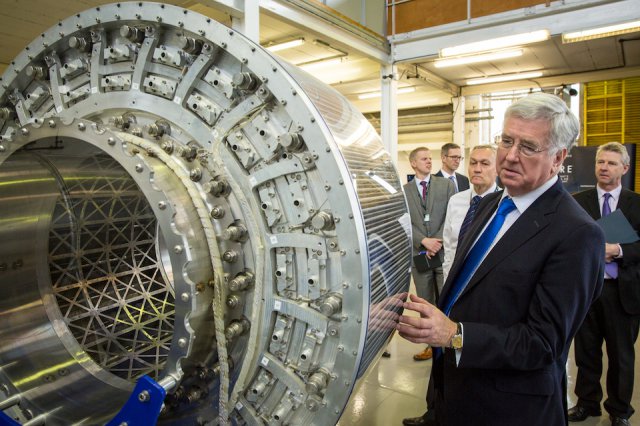In a major speech at the University of Oxford, the Defence Secretary, Michael Fallon, announced the launch of a two year £8 million second phase of innovative research and development, exploring the future of unmanned air systems.
Developed in partnership with Leonardo Helicopters, the Rotary Wing Unmanned Air Systems (RWUAS) Capability Concept Demonstrator will be a vital tool in discovering how unmanned air systems can support our personnel on the battlefield of the future by developing new concepts and technologies.
Minister for Defence Procurement Harriett Baldwin said: “Supported by our rising defence budget and £178 billion Equipment Plan, we want to transform defence and work with industry, academics and allies to find innovative ways to stay at the international cutting edge.
“This two year £8 million joint investment will sustain key high-skill jobs in Yeovil and is the next stage in understanding how unmanned air systems can keep our personnel safe on the battlefields of the future.”
Leonardo’s Chief Executive Officer and General Manager Mauro Moretti added “This is an exciting time as the opportunities presented by unmanned technologies start to be realised in the vertical take-off and landing sector. These technologies and systems can be a game changer in terms of undertaking a wide range of autonomous operations at a significantly lower cost.”
RWUAS CCD Phase2 further recognises Leonardo’s unique technical capability in Helicopter System Design. The  contract will cover the completion of research and development activity begun under the “RWUAS CCD Phase 1” programme between 2013 and 2015 and will then extend this to undertake further research, development, analysis and experimentation relating to rotary winged air-vehicle technologies and rotary wing platform operations, within future operating environments, fleet mixes and the overall Defence aviation capability structure; drawing on lessons from the “Unmanned Warrior” demonstrations held in 2016.
contract will cover the completion of research and development activity begun under the “RWUAS CCD Phase 1” programme between 2013 and 2015 and will then extend this to undertake further research, development, analysis and experimentation relating to rotary winged air-vehicle technologies and rotary wing platform operations, within future operating environments, fleet mixes and the overall Defence aviation capability structure; drawing on lessons from the “Unmanned Warrior” demonstrations held in 2016.
In placing the contract the two organisations will enter into a programme of fundamental and applied research and experimentation to mature, develop understanding of and advance technology, overall system design and operational capabilities to enable embarked, unmanned rotary wing aircraft operations. The programme will utilise the specialist engineering skill base at Leonardo, in demonstrating new methods and technologies to reduce the risks associated with rotary wing operations in other similarly challenging operating environments, including supporting regulatory development in this area.
The jointly funded programme will utilise the specialist engineering skill base at Leonardo Helicopters by exploring emerging technologies and methods. The announcement comes after the Royal Navy led ‘Unmanned Warrior’ in 2016: a major international demonstration of autonomous systems which could transform the way in which the Armed Forces of the future help keep Britain safe.
Photo: The Defence Secretary with a heat exchanger, a component part of the SABRE (Synergetic Air-Breathing Rocket Engine) at Reaction Engines in Culham Science Park in Oxfordshire. Crown Copyright.
Source:Press Release

